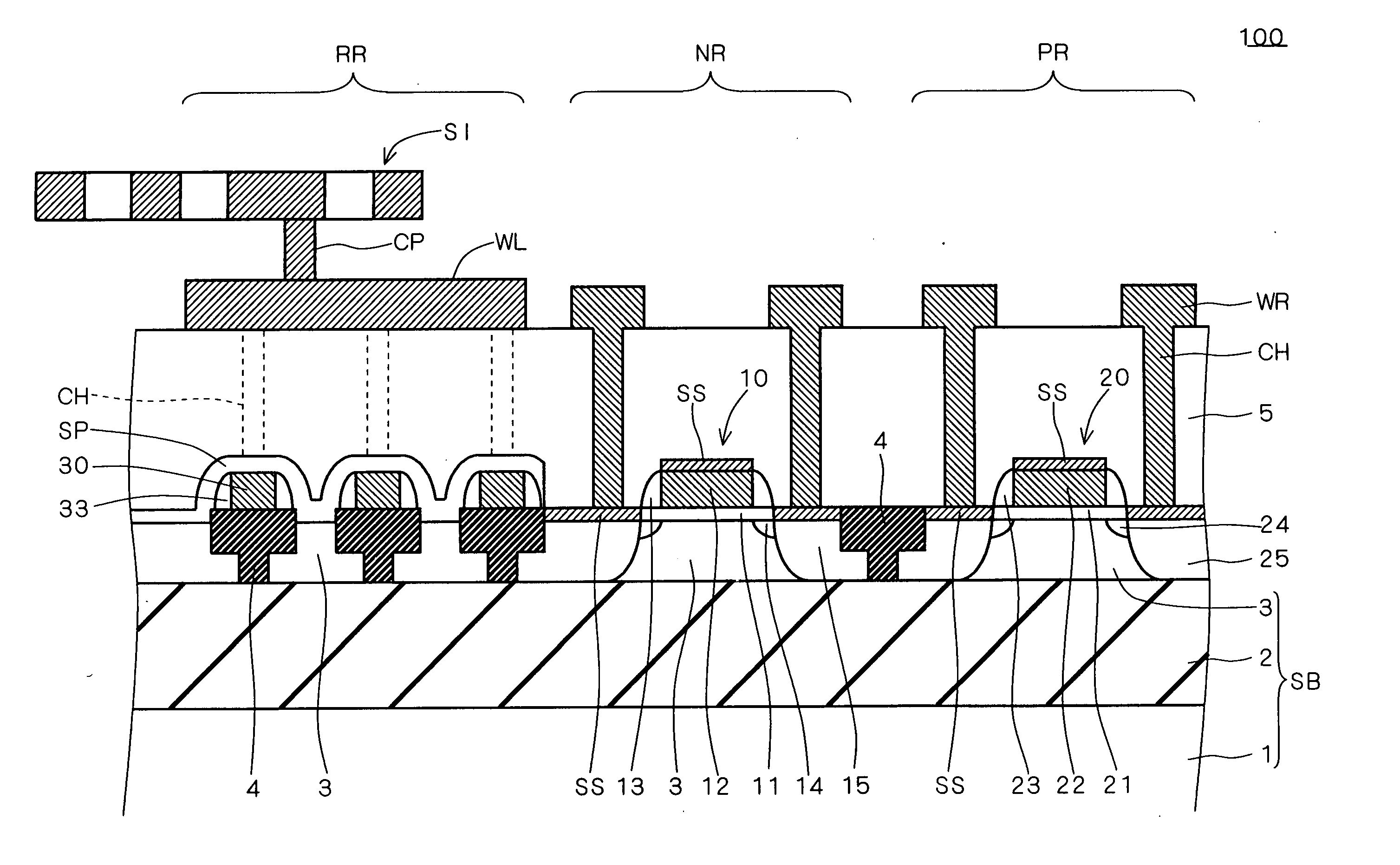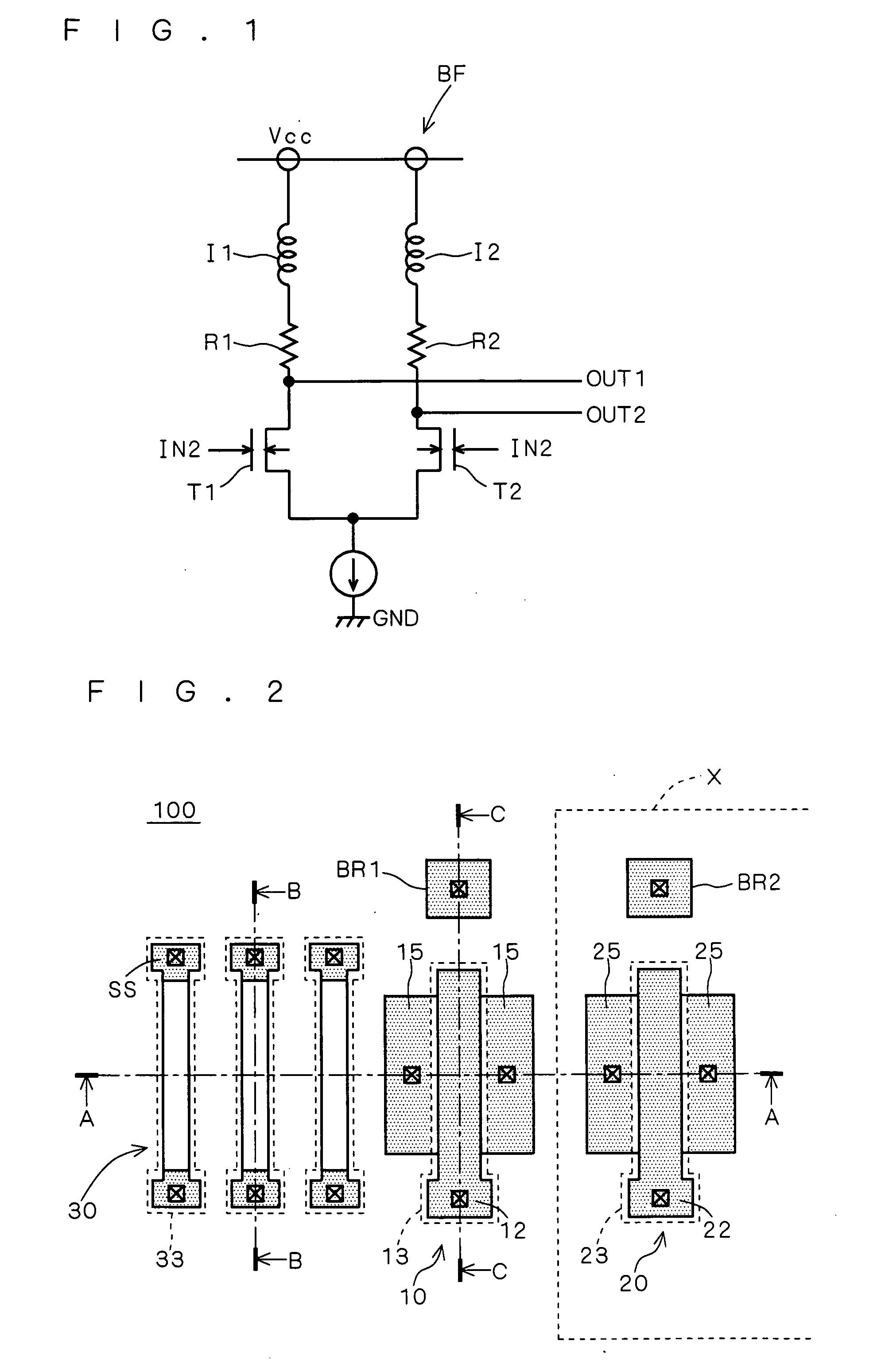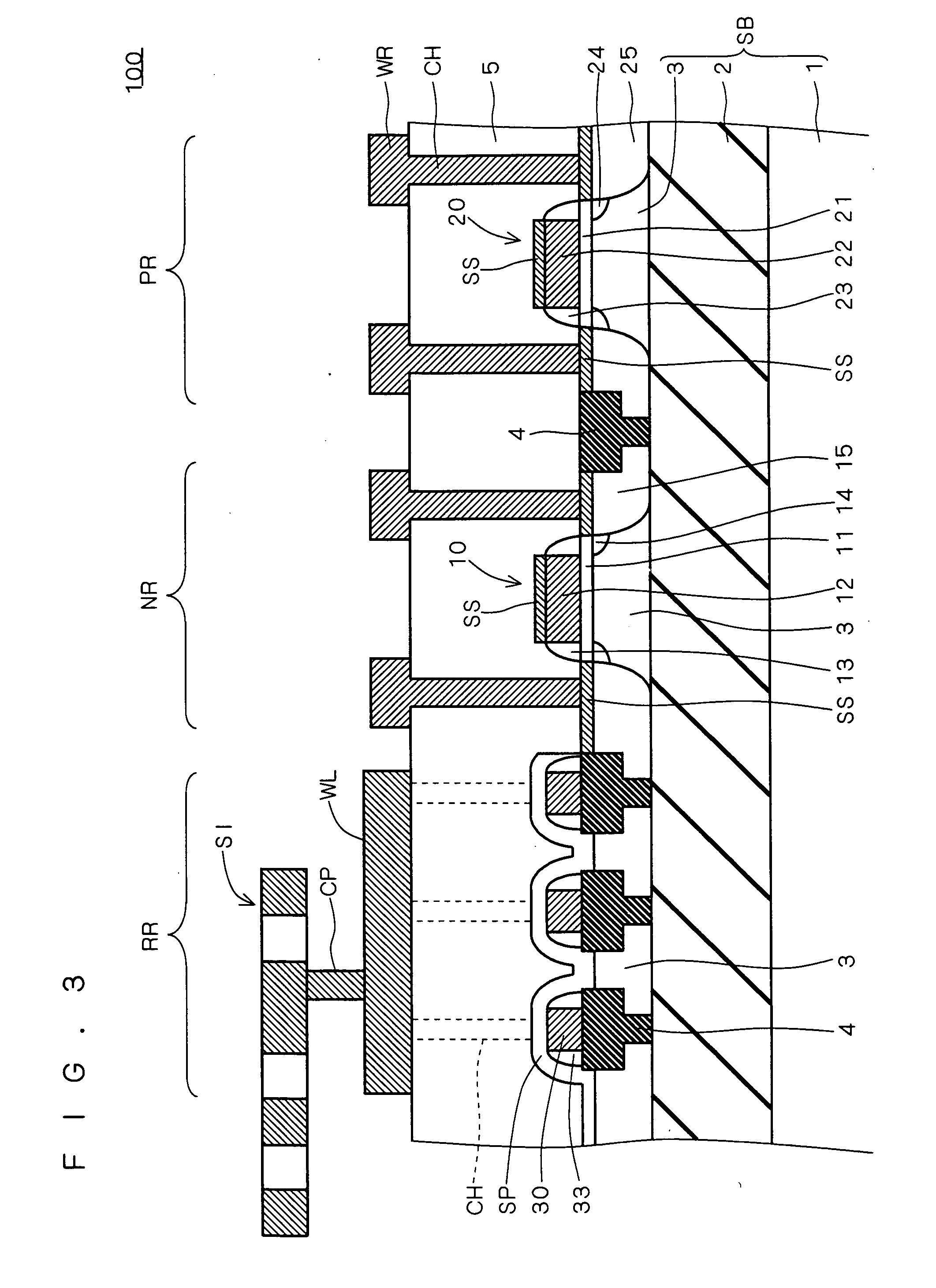Semiconductor device and method of manufacturing the same
a technology of semiconductor devices and semiconductors, applied in the direction of solid-state devices, transistors, inductances, etc., can solve the problems of reducing breakdown voltage, kinks, and various problems of the soi device with the fti structure, and achieve the effect of reducing the parasitic capacitance of the resistive element and high circuit performan
- Summary
- Abstract
- Description
- Claims
- Application Information
AI Technical Summary
Benefits of technology
Problems solved by technology
Method used
Image
Examples
first modification
[0125] D. First Modification
[0126] According to the above-described preferred embodiment, implantation of impurities into the SOI layer 3 is prevented in the resistor region RR during formation of the semiconductor element. By doing so, the resistance of the SOI layer 3 can be kept high in the resistor region RR, and also, the SOI layer 3 can be fully depleted in the resistor region RR, depending on a voltage. In contrast thereto, to implant impurities into the resistive elements 30 at the time of source / drain doping, for example, would allow reduction of a resistance of each of the resistive elements 30. To this end, not a resist mask including an opening which exposes the whole resistor region RR, but a resist mask including openings which expose only the resistive elements 30, respectively, in the resistor region RR, is formed so that implantation of impurities into the portions of the SOI layer 3 interposed between the trench isolation films 4 can be prevented.
[0127] In forming...
second modification
[0129] E. Second Modification
[0130] According to the above-described preferred embodiment, the trench isolation films 4 each with the hybrid-trench isolation structure are provided at intervals with portions of the SOI layer 3 interposed therebetween, and the resistive elements 30 are formed on the trench isolation films 4, respectively, in the resistor region RR. Alternatively, trench isolation films each with the full-trench isolation structure may be provided in place of the trench isolation films 4, in the resistor region RR. Below, a structure according to a second modification, which includes the trench isolation films each with the full-trench isolation structure in the resistor region RR, as well as manufacture thereof, will be described with reference to FIGS. 26, 27, 28, and 29. FIGS. 26, 27, 28 and 29 illustrate steps for manufacturing the trench isolation films according to the second modification in order of occurrence.
[0131] After the steps illustrated in FIGS. 6, 7, ...
third modification
[0137] F. Third Modification
[0138] According to the above-described preferred embodiment, implantation of impurities into the SOI layer 3 is prevented in the resistor region RR during formation of the semiconductor element. By doing so, the resistance of the SOI layer 3 can be kept high in the resistor region RR, and also the SOI layer 3 can be fully depleted in the resistor region RR, depending on a voltage. In this regard, not only the SOI layer 3 in the resistor region RR, but also the trench isolation films 4 in the resistor region RR, are not subjected to implantation of impurities. As a result, a thickness of each of the trench isolation films in the resistor region RR can be made larger than that in the element region.
[0139] Specifically, to implant impurities into the trench isolation films would increase an etching rate in hydrofluoric acid (HF) etching which is to be later performed for removing the silicon oxide film.
[0140] For example, as described above with reference...
PUM
 Login to View More
Login to View More Abstract
Description
Claims
Application Information
 Login to View More
Login to View More - R&D
- Intellectual Property
- Life Sciences
- Materials
- Tech Scout
- Unparalleled Data Quality
- Higher Quality Content
- 60% Fewer Hallucinations
Browse by: Latest US Patents, China's latest patents, Technical Efficacy Thesaurus, Application Domain, Technology Topic, Popular Technical Reports.
© 2025 PatSnap. All rights reserved.Legal|Privacy policy|Modern Slavery Act Transparency Statement|Sitemap|About US| Contact US: help@patsnap.com



